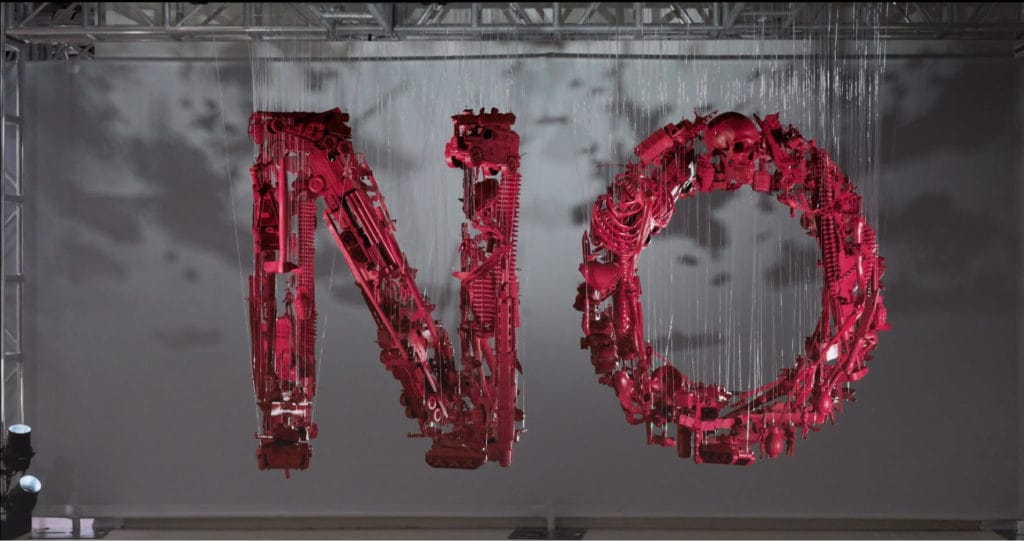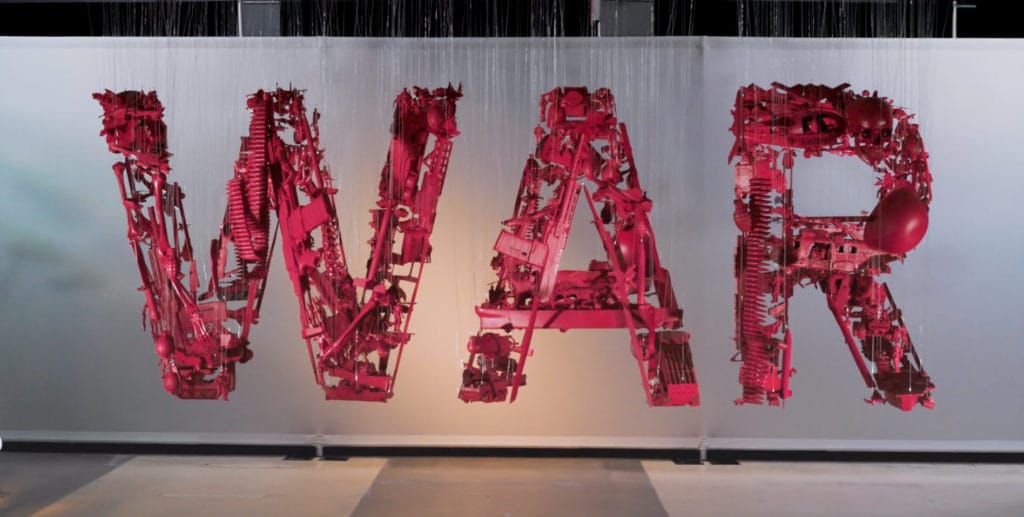With a mastery of utilizing three-dimensional spaces to create a sculpture, American artist Michael Murphy plays with his audience's perspective with his perceptual art style.
His works invoke his use of negative space and positioning as well as delivering highly thought-provoking messages on various social issues such as gun control, war conflicts, climate change, and freedom of expression.
Murphy gained notoriety with his portrait of Barack Obama during the 2008 elections. In an interview with Forbes, Murphy detailed how his works carry different interpretations.
"They are about the viewer’s perception. Perceptual experience refers to a human receiving stimuli from an outside source. I feel that when someone interacts with an artwork, their interpretation of that artwork is the right one; what they take away from it is theirs, which is “correct.” When I view an artwork, there are things that I take away. Those interpretations are my own. I consider the artworks to have the potential to be meaningful to different people in different ways."
Some of his works align with the United Nations' Sustainable Development Goal of Peace, Justice, and Strong Institutions like how he advocates for the intersection between children and war. This is evident in Polina, a portrait of a six-year-old Ukrainian child who left Ukraine because of the Russian-Ukraine conflict.

The installation not only remembers Polina and how she arrived in Germany with her family, but also she represents the other families and children whose life was uprooted because of war and were forced to leave their homes and way of living.
According to the United Nations, in 2022, around 108.4 million people have been forcibly displaced due to various war conflicts worldwide. This is 2.5x more than the number a decade ago.
To give dimension to a flat image, Murphy's installations are made up of small individual pieces, whether ping pong balls or 3D-rendered sculptures, specifically situated to reveal a bigger picture once viewed from a certain angle. Multiple layers are set to complete the illusion. He decided to call it perceptual art when after analyzing his work, he realized that the key components are perception and the viewer's experience


No War by Michael Murphy. Image courtesy of Sparenberg designs.
Another anti-war installation Murphy installed is called No War where he used a variety of children's toys, juxtaposed with skulls and bones to depict the horrors of the conflict. He writes on his website, "It is meant to serve as a protest to all wars. The use of the toys is intended to draw attention to the way they are used to indoctrinate and propagandize children and normalize war."
Aside from anti-war sentiments, Murphy also calls to attention the interconnectedness of the environment and humanity by memorializing waste pickers in India with his installation Dolly. Waste pickers are unsung heroes as they deal with waste responsibly. Interestingly, he used plastic waste from Bengaluru to complete the installation.
Putting a face on the waste and plastic concern humanizes the issue and makes it more relatable to the audience instead of just showing the waste. When asked about why he chose the photo of 20-year-old Dolly Raheema, he explained in an interview, "I wanted to capture her smile, and that sense of positivity she has, and share that with the world to show how important it is for us to pay attention to the human story and the humanity behind the plastics crisis. People like Dolly are some of the rare individuals who work hard to keep plastics out of the ocean and clean up our planet, and they should be applauded.”
"For me, art is a form of communication and a way to create experiences for people and stimulate critical thinking. My work doesn’t tell people what to think. It tells them to think." Murphy said.
In the end, perceptual art invites its audience to see a certain topic from different points of view. It also encourages the viewers to step back and see the bigger picture.
